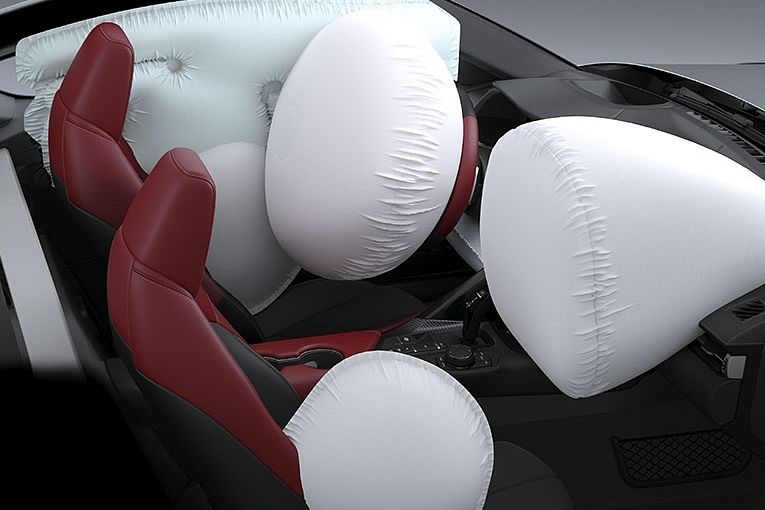When you get into your vehicle, have you ever pondered what really keeps you safe in the event of a collision? Is it just a seatbelt? Or is there a hidden safety mechanism, quietly working in the background? Enter the Supplemental Restraint System (SRS)—a term that might sound complex but begs a closer examination. This system is an indispensable component of modern automotive safety, blending seamlessly with traditional restraints to enhance occupant protection in the event of an accident.
Let’s delve into the intricate world of SRS, exploring its composition, functionality, and impact on vehicle safety.
1. Understanding SRS: The Basics
At its core, the SRS consists of various elements that work in concert to provide an additional layer of protection. Primarily, this includes airbags, which deploy during a collision to cushion and protect occupants from violent impact. While seatbelts are designed to restrain and hold occupants in place, airbags mitigate the force of the impact by absorbing energy.
2. Airbags: The Heart of SRS
The quintessential feature of the SRS is the airbag. Generally, cars are equipped with multiple airbags, including:
- Front Airbags: These deploy from the steering wheel and dashboard to protect the driver and front passenger during frontal collisions.
- Side Airbags: Positioned in the seats or doors, side airbags are vital for protecting occupants during side-impact crashes.
- Curtain Airbags: Deploying from the roofline, these provide additional protection to the head and neck, especially in rollover incidents.
- Knee Airbags: Typically found in luxury vehicles, these airbags protect the driver’s knees and lower body in severe frontal crashes.
This variety of airbags encapsulates the multifaceted approach of the SRS. Each airbag has a specific purpose, carefully designed to target potential injury areas and mitigate risks effectively.
3. How Does SRS Work?
The complexity of SRS becomes evident when examining its operational mechanics. At the heart of the system is a set of sensors strategically placed around the vehicle. These sensors continuously monitor various conditions, such as the speed of impact and deceleration. In a fraction of a second, they determine whether a collision is severe enough to warrant airbag deployment.
Upon detecting a potential impact, an electronic control unit (ECU) triggers an explosive charge that inflates the airbag, sending it into action just milliseconds before the occupants come into contact with the vehicle’s interior. This swift action is crucial; the effectiveness of the airbag hinges on its timely deployment, which is designed to happen almost instantaneously.
4. Challenges of SRS: Are There Downsides?
While SRS systems undeniably save lives, they are not without their challenges. For one, the effectiveness of airbags can lead to misunderstandings regarding their function. Drivers might mistakenly believe that airbags alone suffice for safety, neglecting the equally critical role of seatbelts. This can result in individuals being unrestrained, potentially negating the benefits of the SRS when it matters most.
Additionally, the deployment of airbags can also present risks. Accidental activation during minor collisions can cause injuries, particularly to shorter occupants or children. Thus, the positioning of the seats, particularly for those in the front row, becomes paramount—highlighting the importance of adhering to safety guidelines for child seats.
5. Maintenance of SRS: Ensuring Optimal Functionality
To truly appreciate the efficacy of the SRS, regular maintenance and vigilance are crucial. A malfunctioning airbag can be a matter of life and death. Routine checks should include ensuring that the airbag warning light on the dashboard functions correctly. If the light is illuminated, it indicates a problem that must be addressed immediately.
Moreover, when bringing your vehicle to a service center, be sure to inquire about the health of the SRS components. Technicians can perform diagnostics to ensure all sensors are operational and that the airbags remain in optimal condition.
6. Future Advancements in SRS Technology
As the automotive industry continually evolves, so does SRS technology. Manufacturers are exploring advanced versions, such as adaptive airbags that can adjust deployment force based on occupant size and seating position. Additionally, integrated systems that utilize vehicle-to-vehicle communication might revolutionize the way SRS responds to impending accidents, enhancing anticipation and preparation for unavoidable impacts.
7. Conclusion: The Role of SRS in Automotive Safety
The Supplemental Restraint System is pivotal in ensuring automotive safety. Combining various types of airbags and advanced sensor technology, the SRS exemplifies the blend of innovation and precaution in modern vehicles. As we marvel at its complexity, it is crucial to acknowledge its limitations and participate actively in our safety by embracing practices such as regular maintenance and proper usage of restraint systems.
Driving is, after all, a daily adventure, and understanding how your vehicle protects you can be both enlightening and empowering. Are you ready to take charge of your safety on the road?
